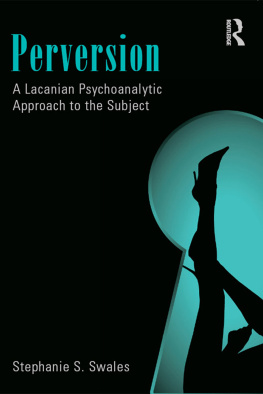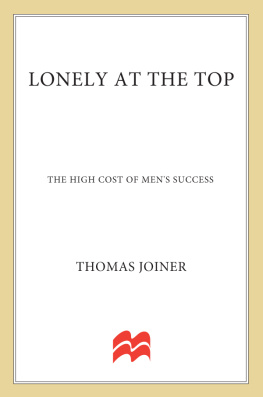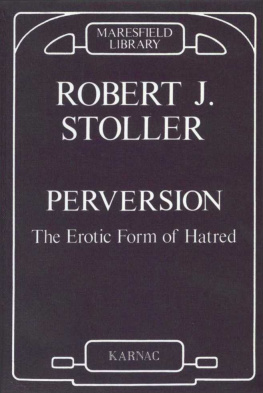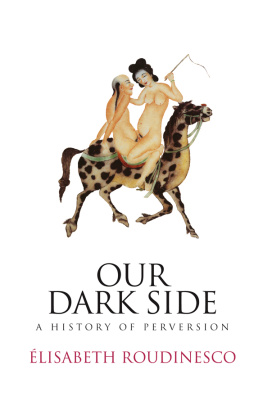Thomas Joiner - The Perversion of Virtue. Understanding Murder-Suicide
Here you can read online Thomas Joiner - The Perversion of Virtue. Understanding Murder-Suicide full text of the book (entire story) in english for free. Download pdf and epub, get meaning, cover and reviews about this ebook. year: 2014, publisher: Oxford University Press, genre: Science. Description of the work, (preface) as well as reviews are available. Best literature library LitArk.com created for fans of good reading and offers a wide selection of genres:
Romance novel
Science fiction
Adventure
Detective
Science
History
Home and family
Prose
Art
Politics
Computer
Non-fiction
Religion
Business
Children
Humor
Choose a favorite category and find really read worthwhile books. Enjoy immersion in the world of imagination, feel the emotions of the characters or learn something new for yourself, make an fascinating discovery.

- Book:The Perversion of Virtue. Understanding Murder-Suicide
- Author:
- Publisher:Oxford University Press
- Genre:
- Year:2014
- Rating:5 / 5
- Favourites:Add to favourites
- Your mark:
- 100
- 1
- 2
- 3
- 4
- 5
The Perversion of Virtue. Understanding Murder-Suicide: summary, description and annotation
We offer to read an annotation, description, summary or preface (depends on what the author of the book "The Perversion of Virtue. Understanding Murder-Suicide" wrote himself). If you haven't found the necessary information about the book — write in the comments, we will try to find it.
The Perversion of Virtue. Understanding Murder-Suicide — read online for free the complete book (whole text) full work
Below is the text of the book, divided by pages. System saving the place of the last page read, allows you to conveniently read the book "The Perversion of Virtue. Understanding Murder-Suicide" online for free, without having to search again every time where you left off. Put a bookmark, and you can go to the page where you finished reading at any time.
Font size:
Interval:
Bookmark:
The Perversion of Virtue
Understanding Murder-Suicide
THOMAS JOINER, PHD


Oxford University Press is a department of the University of Oxford.
It furthers the Universitys objective of excellence in research, scholarship,
and education by publishing worldwide.
Oxford New York
Auckland Cape Town Dar es Salaam Hong Kong Karachi
Kuala Lumpur Madrid Melbourne Mexico City Nairobi
New Delhi Shanghai Taipei Toronto
With offices in
Argentina Austria Brazil Chile Czech Republic France Greece
Guatemala Hungary Italy Japan Poland Portugal Singapore
South Korea Switzerland Thailand Turkey Ukraine Vietnam
Oxford is a registered trademark of Oxford University Press
in the UK and certain other countries.
Published in the United States of America by
Oxford University Press
198 Madison Avenue, New York, NY 10016
Oxford University Press 2014
All rights reserved. No part of this publication may be reproduced, stored in a
retrieval system, or transmitted, in any form or by any means, without the prior
permission in writing of Oxford University Press, or as expressly permitted by law,
by license, or under terms agreed with the appropriate reproduction rights organization.
Inquiries concerning reproduction outside the scope of the above should be sent to the Rights
Department, Oxford University Press, at the address above.
You must not circulate this work in any other form
and you must impose this same condition on any acquirer.
Library of Congress Cataloging-in-Publication Data
Joiner, Thomas E.
The perversion of virtue : understanding murder-suicide / Thomas Joiner.
pages cm
Includes bibliographical references and index.
ISBN 9780199334551 (hardback)
1. SuicideUnited States. 2. HomicideUnited States. I. Title.
HV6545.J649 2014
362.28dc23
2013028785
9 8 7 6 5 4 3 2 1
Printed in the United States of America
on acid-free paper
This book is ambitious and single-minded about a grave subject. The goal of the book is to develop and defend a specific perspective on murder-suicide, one that borrows on established knowledge and concepts, but one that reorganizes and extends them into a coherent and incrementally novel understanding of the horror that is murder-suicide. By the books end, I hope to have persuaded readers that the perspective developed in the book is viable, incremental beyond past work, and crucially, now ready to face off empirically with other perspectives.
The bootstrapping nature of this process deserves emphasis. The argument begins with facts, moves to conjecture, and builds from there to establish a theory of what defines murder-suicide and the thought processes that underlie it. The approach is inherently conjectural, as theory-building by definition is. My goal is to introduce a contender into the race to explain murder-suicide, not to call the race as finished.
In a field such as this, the race clearly is not finished, a main reason for which is the extent and quality of extant data on the phenomenon. Unsurprisingly, illuminating data on the mindset of the murder-suicide perpetrator are rare, and when available, incomplete. To this point, Liem and Nieuwbeerta state, Most existing studies
This state of affairs affects the current project as it would any project on murder-suicide, but it should be acknowledged that this book is acutely affected by this issue because the books goal is to characterize the true mindset of the murder-suicide perpetrator. My approach is to work with what data are available, which often involve things like notes left behind by perpetrators, as well as behavioral observations made by those who knew the perpetrator. These can be quite revealing but have drawbacks as sole sources of data, as do purely anecdotal sources of information more generally. The gaps in the record are sometimes extensive enough that I speculate on the state of mind of the individuals involved. I attempt to make the tentative nature of these speculations clear and have confidence that readers can decide on their own whether they are plausible or not.
Inevitably, and I think naturally enough, the book, to a degree, favors its own argument. This would be natural enough even if there were many existing theories of the phenomenon of murder-suicide, but as the book shows, there are not. The book advocates for a particular perspectivean initial theoretical conjecture in the midst of a relative conceptual vacuumand trusts readers discernment regarding the merits or lack thereof of the explanation developed in what follows.
Introductory Material
Murder-Suicide: Prevalence, Characteristics, and Initial Conceptualization
I N CONNECTICUT IN 1782, LYDIA BEADLE WAS MURDERED, as were her four children, who ranged in age from 6 to 11. Her headstone reads, Fell by the hands of William Beadle/an infatuated Man who closed the/horrid sacrifice of his Wife/& Children with his own destruction. If William Beadle were intent on suicide, one might ask, why would he first kill his wife and children? Or, alternatively, did he kill his family rashly and then, in despair and as a consequence, kill himself? The headstone describes William Beadle as infatuatedwhat does this mean precisely? Why, fundamentally, did William Beadle perpetrate this appalling incident?
Crime perpetrated by one of us on a fellow human being opens up a unique window on our very souls. The ancient Roman playwright Terence wrote Homo sum: humani nil a me alienum puto (I am human and nothing human is alien to me).mirror on us: Why did he do that? What could have driven someone to such lengths? Given certain circumstances, do I have that in me?
In what follows, I propose some answers to these questionsanswers that may surprise, maybe even shock. Truth regularly has this character. In fact, in his poignant A Mathematicians Apology, the eminent English mathematician G. H. Hardy described trueeven beautifulmathematical concepts as being initially surprising, but then, upon reflection and in retrospect, familiar, even obvious. The power of truth and beauty, in part, is that in rapid succession they startle us and then they ground us.
Mathematicians have perhaps more opportunities to understand and experience this power, but they have not cornered the market. Darwins bulldog, Thomas Henry Huxley, upon perceiving the core idea of Darwins masterpiece and experiencing the attendant surprise, pleasure, and then familiarity, stated, How extremely stupid not to have thought of that!
I have posed concepts in previous books that, although not Darwinian in profundity, I nevertheless contend have this character of initial surprise followed by knowing understanding. In Why People Die By Suicide, I argued that a kind of fearlessness is required to voluntarily face the daunting prospect of ones death, and that doing so necessarily involves a fight against ancient, ingrained, and powerful self-preservation instincts. Many are initially startled by this perspective on suicidal behaviorthe concepts of fearlessness and suicide tend not to co-occur in the public mindbut upon reflection, it is conceptually obvious that confronting an extremely fearsome thing requires a certain fearlessness, just as it is empirically obvious that many highly suicidal people shrink from enacting their own deaths, despite genuine desire and intent to die, the obstacle being an uncontrollable fear of death. This perspective surprises people at almost the same time it induces them to say things like, oh, yes, of course.
Next pageFont size:
Interval:
Bookmark:
Similar books «The Perversion of Virtue. Understanding Murder-Suicide»
Look at similar books to The Perversion of Virtue. Understanding Murder-Suicide. We have selected literature similar in name and meaning in the hope of providing readers with more options to find new, interesting, not yet read works.
Discussion, reviews of the book The Perversion of Virtue. Understanding Murder-Suicide and just readers' own opinions. Leave your comments, write what you think about the work, its meaning or the main characters. Specify what exactly you liked and what you didn't like, and why you think so.











